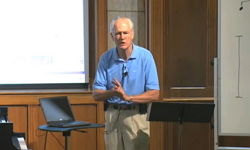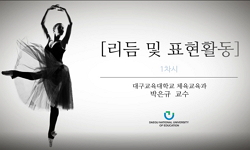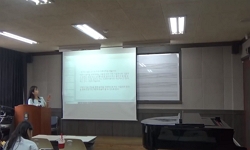Humans grow by being influenced by rhythmical movement, e.g. mother's heartbeat, bloodstream, breath, and voice, etc. since they are in the mother's womb, and live with internal rhythm, e.g. emotion, intelligence, as well as body after birth. Besides,...
http://chineseinput.net/에서 pinyin(병음)방식으로 중국어를 변환할 수 있습니다.
변환된 중국어를 복사하여 사용하시면 됩니다.
- 中文 을 입력하시려면 zhongwen을 입력하시고 space를누르시면됩니다.
- 北京 을 입력하시려면 beijing을 입력하시고 space를 누르시면 됩니다.
유아교육에서의 리듬의 의미와 활용에 관한 고찰 = Study on the Meaning of Rhythm in Early Childhood Education and Utilization
한글로보기https://www.riss.kr/link?id=T13521142
- 저자
-
발행사항
서울: 동국대학교, 2014
-
학위논문사항
학위논문(석사) -- 동국대학교 교육대학원 , 유아교육전공 , 2014. 8
-
발행연도
2014
-
작성언어
한국어
- 주제어
-
DDC
372.21 판사항(22)
-
발행국(도시)
서울
-
형태사항
108p.: 삽도; 26cm.
-
일반주기명
동국대학교 논문은 저작권법에 의해 보호받습니다.
지도교수:김세곤 - DOI식별코드
- 소장기관
-
0
상세조회 -
0
다운로드
부가정보
다국어 초록 (Multilingual Abstract)
Humans grow by being influenced by rhythmical movement, e.g. mother's heartbeat, bloodstream, breath, and voice, etc. since they are in the mother's womb, and live with internal rhythm, e.g. emotion, intelligence, as well as body after birth. Besides, there are outside rhythm, e.g. natural phenomenon, change of season, other people, objects, situation, etc. exist in the world and humans make efforts to regulate toward a positive direction by recognizing internal rhythm and outside rhythm and living in harmony with them. This way, we can say that our life has rhythm, and the reason of regulating it in balance not to break it is to live more healthy and happy life. Adults are more easy to recognize the brokenness of rhythm and try to keep balance, however children have the periodic characteristic that is difficult to keep the balance of rhythm and harmony by recognizing their own rhythm. Therefore, educators close to the children with regard to their life and growth are required to exert efforts to assist them to grow in healthy rhythm.
However, we can often find lots of cases which do not consider children's internal and outside rhythm in current early childhood education, e.g. education mainly with knowledge, gifted and talented education, early education which does not consider children's interest, etc. Also, even the teachers who teach the children implement education of rhythm without exactly recognizing the meaning of rhythm in early childhood education, which phenomenon is regrettable. The reason of this is considered that the opportunity to recognize the importance of it has been insufficient, since the attempt of deeply considering the meaning of rhythm in early childhood education has been insufficient, because the research on rhythm in the early childhood education so far has mostly been performed from the viewpoint of the 20th century's educationalists' rhythm teaching method.
Hereupon, this research aimed at investigating and considering the meaning of rhythm in early childhood education from more wide viewpoint by escaping from the viewpoint of music education to mention Korean traditional infant care which includes the educational content suitable for the energy of the nature and the stream of season among the various viewpoints related to rhythm and the importance of rhythm in their childhood, and searched for the meaning of rhythm in Syto Kimiko(齋藤公子) and Rudolf Steiner's education, who practised the rhythm in the early childhood in their education and research the implication of rhythm in early childhood education by analyzing the examples which utilized rhythm in reality.
This research was performed as following procedure. As the research method, literature research was implemented, and as the general performing process, the research was divided into problem definition, data collection, data analysis, and result deduction.
The meaning of rhythm included in Korean traditional infant care can be searched in the philosophy of life, the energy of universe is rightly connected with human energy. Baby blanket care, which shares rhythm with mother, traditional play according to season and term, natural play device which contains the energy of nature, traditional tone, etc., show that the educational content was made on the basis of the rhythm of the universe and the nature.
The meaning of rhythm which Syto Kimiko considered could be searched in the Sakura Sakuranbo rhythm movement which she suggested. Sakura Sakuranbo rhythm movement, which is the physical exercise activity to express with body along with the music is a program music, is a program made based on the evolutionary biological philosophy, i.e. human development is performed in the order of the universe and the nature and the system, which can be said to be an attempt to match with children's basic development rhythm. In terms that it intended to maintain children's development rhythm healthily, it could be confirmed that it emphasized the importance of the rhythm of childhood.
The meaning of rhythm which Rudolf Steiner could be searched in Waldorf's childhood education. Waldorf childhood education makes spatial rhythm be naturally infiltrated and recognized through the stream of a day, week, month, and a year, which are the life of the children. Children can get emotional stability through the rhythmical life to which their life assigned the principle of order. In terms that this emotional stability can be the basis to have a healthy life either in quantity or quality, the importance of rhythmical life in childhood could be confirmed.
In conclusion, the implication of rhythm in early childhood education based on the above investigation can be summarized as follows.
First, rhythm education has the characteristic to be performed by using play, exercise, and expression. As the method to educate rhythm, which is invisible, the method of rhythm education could be investigated that it has been performed through ‘play’, which considers children's interest, ‘exercise’, which promotes children's physical and emotional development, and ‘expression’, which is easy to express one's thought or feeling with language or gesture.
Second, rhythm education promotes children's growth and development toward a positive direction. The basis of rhythm education is to compose children's physical and mental rhythm healthily and stably, so that it has a significant meaning that it can develop children's mind and body toward a good direction.
Third, rhythm is inherent in children's life itself. Human has his own intrinsic rhythm, and intends to have balance and harmony not to break the rhythm in the system or the universe and the nature. Rhythm is inherent in breath, natural phenomenon, season, daily life, etc., which are children's life, and it could be recognized that a true rhythm education is to create a rhythmical life atmosphere to desirably form body, spirit, and mind by considering this rhythm in childhood.
국문 초록 (Abstract)
인간은 태내기 때부터 어머니의 심장박동, 혈류의 파동, 숨소리와 말소리 등의 리듬적 움직임에 영향을 받고 자라며 세상에 태어난 후에도 신체뿐만 아니라 감정, 지성 등의 내부 리듬을 갖...
인간은 태내기 때부터 어머니의 심장박동, 혈류의 파동, 숨소리와 말소리 등의 리듬적 움직임에 영향을 받고 자라며 세상에 태어난 후에도 신체뿐만 아니라 감정, 지성 등의 내부 리듬을 갖고 살아간다. 이외에도 세상에는 자연 현상이나 계절의 변화, 타인, 사물, 상황 등의 외부 리듬이 존재하며 인간은 내부 리듬과 외부 리듬을 인식하고 조화를 이뤄 긍정적인 방향으로 조절하고자 노력한다. 이렇듯 우리의 삶에는 리듬이 존재하고 있다고 할 수 있으며 리듬이 깨어지지 않도록 균형 있게 조절하는 것은 삶을 좀 더 건강하고 행복하게 영위하고자 함이다. 성인들은 리듬이 깨어짐을 인식하고 균형을 이루기 위해 노력하는 것이 쉬운 반면에, 유아들은 자신의 리듬을 인지하고 리듬의 균형과 조화를 이루는 것이 어려운 시기적 특징을 가지고 있다. 그렇기 때문에 유아의 삶, 그리고 발달에 있어 가까이 위치하고 있는 교육의 담당자들이 유아가 건강한 리듬 안에서 성장할 수 있도록 도모해 줄 필요가 있다.
허나 현재의 유아교육에서는 지식을 위주로 하는 교육이나 영재교육, 유아의 흥미를 배려하지 않고 시행하는 조기교육 등 유아의 내적 외적 리듬을 고려하지 않는 모습을 심심치 않게 발견할 수 있다. 또한 교육을 담당하는 교사들조차 유아교육에서의 리듬의 의미를 분명하게 인식하지 못한 채 리듬의 교육을 하고 있는 현상은 참으로 안타까운 실정이다. 이는 지금까지 유아교육에서 리듬에 관한 연구가 대부분 20세기 음악교육학자의 리듬교수법의 관점에서 이루어져 왔기에 유아교육에서의 리듬의 의미를 깊이 고찰해 보는 시도가 부족하여 그 중요성을 인식할 수 있는 기회가 부족했었기 때문이라고 사료된다.
이에 따라 본 연구의 목적은 유아교육에서의 리듬의 의미에 대하여 음악교육의 관점에서 벗어나 좀 더 넓은 관점에서 살펴보고 고찰하는 것으로 리듬과 관련한 다양한 관점 중 자연의 기운과 절기의 흐름에 맞는 교육내용을 내포하고 있는 한국 전통육아, 유아기 리듬의 중요성을 언급하고 그것을 교육으로 실천한 학자인 사이토 기미코(齋藤公子)와 루돌프 슈타이너(Rudolf Steiner)의 교육에서 리듬이 어떠한 의미를 갖고 있는지 찾아보고 리듬 활용 실제를 함께 분석하여 리듬의 유아교육적 함의를 연구하고자 한다.
본 연구는 다음과 같은 절차로 진행되었다. 연구의 방법은 문헌연구에 의했으며, 일반적인 수행과정으로 볼 수 있는 문제규정, 자료수집, 자료분석, 결과도출로 나누어 연구를 수행하였다.
한국 전통육아에 내재된 리듬의 의미는 우주적 기운이 곧 인간의 기운과 연관된다는 삶의 철학 안에서 살펴볼 수 있다. 어머니와 리듬을 공유하는 포대기 육아, 계절과 절기에 따른 전통놀이, 자연의 기운이 담긴 자연물의 놀잇감, 전래음율 등에서 우주와 자연의 리듬에 기초하여 교육내용이 이루어져 있음을 알 수 있었다.
사이토 기미코가 본 리듬의 의미는 그녀가 주창한 사쿠라 사쿠란보 리듬운동에서 살펴볼 수 있다. 음악과 함께 신체로 표현하는 신체 운동활동인 사쿠라 사쿠란보 리듬운동은 인간의 발달이 우주와 자연의 질서와 체계 속에서 발달해간다는 진화생물학적 사상을 기반 하여 만들어진 프로그램으로 이는 유아의 기본적인 발달 리듬을 맞춰주려는 시도라고 볼 수 있다. 유아의 발달 리듬을 건강하게 유지시켜 주고자 하였다는 점에서 유아기 리듬의 중요성을 강조하였다는 것을 알 수 있었다.
루돌프 슈타이너가 본 리듬의 의미는 발도르프 유아교육에서 살펴볼 수 있다. 발도르프 유아교육에서는 우주적 리듬을 유아의 생활이 되는 하루, 주, 달, 1년의 흐름을 통해 자연스럽게 스며들고 인식할 수 있도록 하고 있다. 유아들은 자신의 삶에서 질서의 원리를 부여한 리듬생활을 통해 정서적인 안정감을 얻을 수 있다. 이러한 정서적 안정감은 양적으로든 질적으로든 건강한 삶을 살아갈 수 있는 기본이 된다는 점에서 유아기 리듬생활의 중요성을 인식할 수 있었다.
이상에서 살펴본 내용을 통해 리듬의 유아교육적 함의를 요약하면 다음과 같다.
첫째, 리듬교육은 놀이, 운동, 표현을 활용하여 이루어지고 있는 것이 특징이다. 눈에 보이지 않는 리듬이라는 것을 교육할 수 있는 방법으로 유아의 흥미를 고려한 ‘놀이’를 통해, 유아의 신체와 정서적 발달을 도모하는 ‘운동’을 통해, 생각이나 느낌을 언어나 몸짓으로 나타내기 쉬운 ‘표현’을 통해 리듬교육이 이루어지고 있음을 알 수 있다.
둘째, 리듬교육은 유아의 성장과 발달을 긍정적인 방향으로 도모한다. 리듬교육의 기초는 유아의 신체와 정신적 리듬을 건강하고 안정적으로 구성하게끔 하기 위함이므로 유아의 심신을 좋은 방향으로 발달하도록 한다는 데에 큰 의의를 부여할 수 있다.
셋째, 리듬은 아이들의 삶, 그 자체에 내재되어 있는 것이다. 인간은 각자 고유의 리듬을 가지고 있으며, 우주와 자연의 질서와 체계 속에서 리듬이 깨어지지 않도록 균형과 조화를 이루고자 한다. 리듬은 아이들의 삶인 호흡, 자연현상, 계절, 하루일과 등에 내재되어 있으며 이러한 리듬을 고려하여 유아기에 신체와 영혼, 정신을 바람직하게 형성할 수 있도록 리듬적인 생활 분위기를 조성해 주는 것이 진정한 리듬교육임을 인식할 수 있다.
목차 (Table of Contents)
- Ⅰ. 서론 = 1
- 1. 연구의 필요성 및 목적 = 1
- 2. 연구범위 및 방법 = 5
- 3. 연구의 제한점 = 6
- 4. 유아교육에서의 리듬활용에 관한 연구동향 = 7
- Ⅰ. 서론 = 1
- 1. 연구의 필요성 및 목적 = 1
- 2. 연구범위 및 방법 = 5
- 3. 연구의 제한점 = 6
- 4. 유아교육에서의 리듬활용에 관한 연구동향 = 7
- Ⅱ. 다양한 관점에서 본 리듬의 의미 = 9
- 1. 리듬의 일반적 개념 및 의미 = 9
- 2. 한국 전통육아에서 본 리듬의 의미와 해석 = 12
- 3. 사이토 기미코가 본 리듬의 의미와 해석 = 16
- 4. 루돌프 슈타이너가 본 리듬의 의미와 해석 = 32
- Ⅲ. 유아교육에서의 리듬 활용 실제 = 43
- 1. 세시풍속과 단동십훈 교육에 내재된 리듬 = 43
- 2. 사쿠라 사쿠란보 리듬운동 = 51
- 3. 발도르프 유아교육기관의 리듬생활 = 68
- Ⅳ. 리듬의 유아교육적 함의 = 84
- 1. 놀이, 운동, 표현을 활용한 리듬교육 = 84
- 2. 유아의 성장과 발달을 도모하는 리듬교육 = 87
- 3. 유아의 삶, 그 자체에 내재된 리듬 = 89
- Ⅴ. 결론 및 제언 = 93
- 참고문헌 = 96
- Abstract = 104












